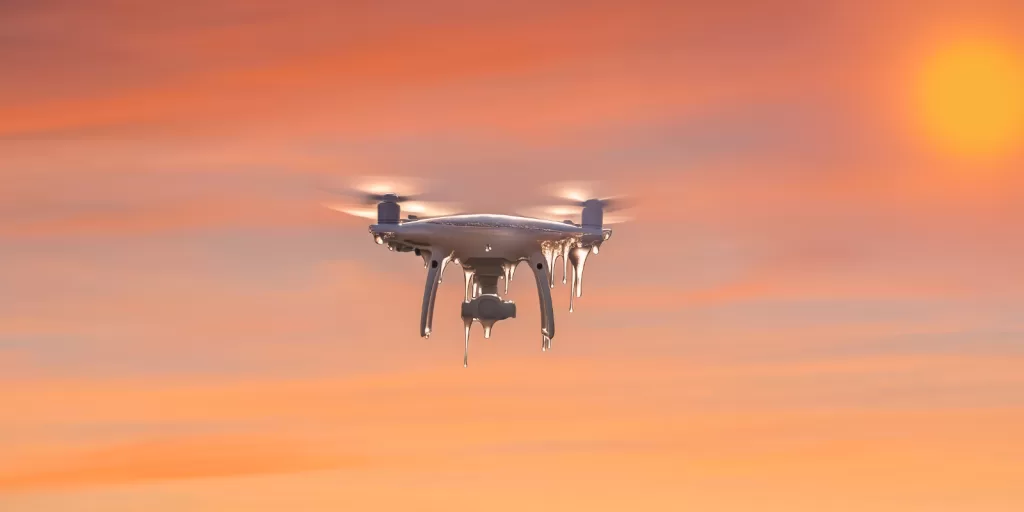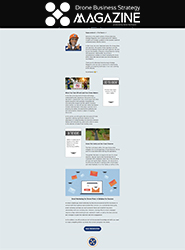
Flying drones in the summer offers unique opportunities to capture stunning visuals and enjoy longer days, but it also presents distinct challenges due to the heat. As temperatures rise, both you and your drone need extra care to ensure safe and efficient operations. For commercial drone pilots and those aiming for Part 107 certification, understanding how to handle hot weather conditions is crucial.
Here are some vital tips to help you navigate the summer skies, from pre-flight planning to in-flight strategies and post-flight maintenance. Let’s dive in and make sure your summer flights are not only successful but also safe and enjoyable.
Plan Your Flights: Beat the Heat
Fly Early or Late: Schedule your flights during the cooler parts of the day. Early mornings and late afternoons have lower temperatures and better lighting for capturing great footage.
Monitor the Weather: Use reliable weather apps to check conditions before and during your flight. Sudden weather changes can impact your plans, so stay informed and be ready to adjust.
Protect Your Drone: Avoid Overheating
Monitor Drone Temperatures: Drones have specific temperature ranges for safe operation. Check your drone’s manual and avoid flying in extreme heat to prevent overheating and potential failure.
Prevent Overheating
- Keep Cool: Ensure your drone’s cooling systems are unobstructed during flights. After flying, let your drone cool down before storing it.
- Shade Your Drone: When not flying, keep your drone in the shade to prevent overheating and battery degradation.
Handle Batteries with Care
- Cool Batteries: Store batteries in a cool, shaded place before use. A cooler bag can help maintain an optimal temperature.
- Avoid Direct Sunlight: Prolonged exposure to sunlight can overheat the batteries, reducing their efficiency and lifespan.
Optimize Flight Performance: Deal with Hot Weather Hazards
Understand Temperature Limits: Consumer electronics, including drones, typically operate well up to 32°C. Avoid letting them reach temperatures of 40°C or higher. Remember, internal drone temperatures can be much higher due to battery and motor heat.
Watch for Warning Signs: If you notice poor responsiveness, signal latency, or intermittent video feed, it’s time to ground your drone and let it cool down.
Low Air Density: Hot air has lower density, making it harder for drones to generate lift. This means the motors work harder, draining the battery faster and causing the drone to heat up more quickly.
High Humidity: Moisture can damage your drone’s electronics. After each flight, wipe down your drone with a dry cloth to remove any moisture.
Ensure Pilot Safety: Stay Hydrated and Cool
Take Care of Yourself: Flying in hot weather can be tough on you too. Stay hydrated by drinking plenty of water. Wear light, breathable clothing, and take breaks in the shade to avoid overheating.
Protect Against Glare: Bright sunlight can cause glare, making it hard to see your controller screen and drone. Use a sun hood for your controller and wear sunglasses to improve visibility.
Maintenance and Storage: Keep Equipment in Top Shape
Calibrate Sensors: Recalibrate your drone’s sensors and cameras regularly, especially as the landscape changes with the seasons. This ensures accurate data collection and imaging.
Proper Storage
- Cool Down Before Storage: Let your drone cool down after flights before storing it to prevent heat damage.
- Avoid Leaving in Hot Cars: The inside of a car can get extremely hot, damaging electronics and batteries. Always take your drone with you instead of leaving it in the car.
Conclusion: The Takeaway
Flying in very hot weather isn’t ideal, but it doesn’t mean you have to pack up your drone and wait for cooler days. By planning your flights, protecting your equipment, and taking care of yourself, you can safely enjoy flying your drone all summer long. Happy flying!
If you have any questions, let us know! If you’d like to hire us, you can get more information here.
Written by: Tony Marino, MBA – FAA Certified Part 107 Commercial Drone Pilot and Chief Business Strategist at Aerial Northwest
Disclaimer: The information provided in this blog post is for general informational purposes only and should not be construed as legal advice.
Resources
- FAA Resources: FAA DroneZone
- Article: Drone Pilot Aerial Photography Business Plan Blueprint 2024
- Article: Top 5 Drone Pilot Marketing Channels for 2024

DRONE BUSINESS STRATEGY MAGAZINE
A free digital publication made exclusively for all small business drone pilots to them help start-up, become profitable while sustaining a competitive advantage within the drone service industry sector they opt to serve.
“If you love to fly, we’d love to have you come aboard!”
We share your information with no one. Our Privacy Policy.









Leave a Reply
Your email is always safe with us.